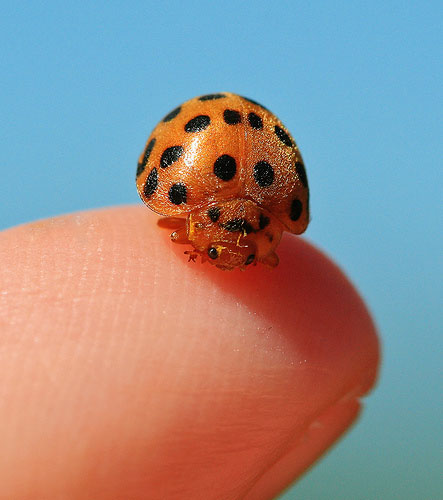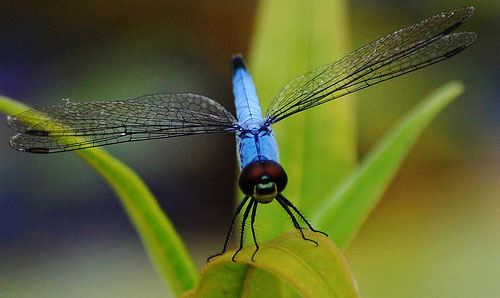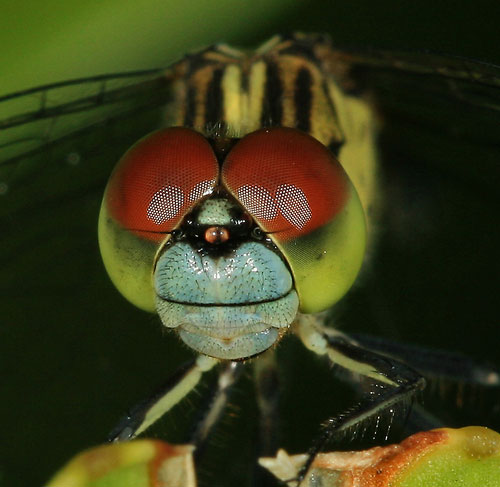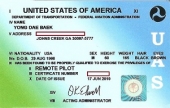zoom, macro, and telephoto lens 의 차이
사진에 입문한지 약간 되니까 지름신의 유혹이 천천히 시작되네요. 카메라에 딸려온 줌렌즈에 더하여 하나 더 렌즈를 구입하고 싶은 생각이 있어서, 조사를 하다가 유용한 글을 발견했기에 게시합니다.
Difference between zoom, macro, and telephoto lenses
What is the relationship between “macro” and “telephoto” lenses?
출처: http://photo.stackexchange.com/questions/43628/what-is-the-relationship-between-macro-and-telephoto-lenses
Difference between macro micro and close up photography
What is the difference between macro, micro and closeup photography?

There is often much confusion amongst new photographers over the
terms macro, micro and close up photography and how they differ. For
starters, macro and micro usually refers to the same thing, in that
Nikon names their range of ‘macro lenses’ with the word ‘micro’. Canon
on the other hand, calls them macro lenses.
For example, Nikons top macro lens is called AF-S VR Micro-Nikkor 105mm f/2.8G IF-ED lens. Notice the term micro in that name.
Now for comparisons sake, Canon’s top macro lens is called a Canon EF 100mm f/2.8 macro lens. This time, instead of seeing the term micro, you’ll notice the term macro within the lens name.
What does macro and micro refer to when it comes to photography?
The word macro means big, whereas the word micro mean small. So how is it that these two terms related?
If the subject you are photographing is small and you want to make it look big, you end up with a “macro” view of a “micro” subject.
What is macro (micro) photography?
Macro photography is that which is taken with a dedicated macro lens. A real macro lens has the capability of achieving in the least a 1:1 magnification. Just because a camera has the word macro written on it, doesn’t make it a true macro lens. Both the Nikon and Canon lenses mentioned above, are considered real macro lenses. If you’re not sure how to recognise a real macro lens, you may find an earlier article useful called, What is a real macro lens.
What is close up photography?
Close up photography, is the act of photographing objects such as flowers or insects in close range so the subject you are photographing fills the frame. In other words, it’s the act of photographing subjects close up. This is easily achievable with any lens, even a 300mm telephoto lens.
Macro photography is in essence close up photography as well. However, close up photography is not always considered as true macro photography. For example, if you have a lens that is NOT considered a real macro lens, yet offers a macro setting (as many do nowadays), this is usually refered to as being close up photography, and not true macro.
How to recognise the difference between macro and close up photography?
Capturing the finest detail, is one of the main differences between macro / micro photography and close up photography.
Macro lenses are expensive for a reason. That being, a true macro lens allows the photographer to capture finer detail than would otherwise have been seen. For example, the hairs on an insects face, or the pattern in its eye.
Take the two photographs below for example. The first image is a very
good example of a close up photograph, taken with a Nikon telephoto
lens. While the second photograph is a macro shot, allowing for bigger
magnification and showing the finest detail.


출처: http://www.slrphotographyguide.com/blog/macro/macro-micro-closeup-difference.html
Who's 아누나끼

- ?
-
 오션님이야 이미 다 알고 계실텐데요.
오션님이야 이미 다 알고 계실텐데요.
저와 비슷한 사정의 초보 분들도 계실 것 같아서 올려봤습니다. ^^ -
?
백문이불여일견입니다.
궁금하면 직접 해봐야지요 ㅎㅎ
저는 해봤는데 다릅니다. 처음엔 감이 안와요.
멀리 있는거 확대하는데... 하지만 땅바닥에서 좀 기어봐야 알 수 있는게 있더라구요. -
 어떤 렌즈로 시도해 보셨나요?
어떤 렌즈로 시도해 보셨나요?
-
14Feb 201616:31Read More

Flash에 관한 간단한 강좌
Flash 초급반에 참가하기 전에 어느 정도 공부를 해놓아야 할 것 같아서 검색해 보았습니다. 빛으로 찍는 사진 사진은 카메라가 아니라 빛으로 찍는다. 초 보 유저들은 사진이 흔들리거나 원하는 느낌을 얻지 못했을 때 촬영 기술과 카메라를 탓하곤 한다. 하... -
04Nov 202210:38Read MoreNo Image
Focus Stacking
며칠 전에 캘리포니아 회원을 위해 만들었는데 혹시 도움이 되시면 좋겠습니다. 포커스 스태킹은 고급사진의 기본이 되었습니다. 정물, 매크로, 랜드스케이프 모두에 적용됩니다. https://youtu.be/bTG4DCYnXPk 감사합니다. https://sajins.net -
05Dec 201623:36Read MoreNo Image
크리스마스 Light Displays
아틀란타 지역에서 크리스마스 Light Displays를 볼 만한 장소 몇몇입니다. 예년에 종종 야간 출사를 가기도 했었습니다. 아래 장소는 대부분 유료이고, 올림픽 공원만 공짜인 것 같네요~ 아~참,, 2015년에는 모 회원을 보타니칼 가든 크리스마스 Light Displa... -
26Jul 201610:42Read MoreNo Image
Chicago 출사 points?
9월달에 혼자 사진찍으러 가려고 어제 뱅기표 예약해놨는데 어디어디서 뭘 찍어야할지를 모르겠네요. 우선 riverwalk쪽에 잠잘떼를 잡을거구요 차는 되도록이면 안빌리고 주위를 걸어다니면 찍으려구요. 도움 부탁드립니다! -
25Jul 201911:05Read MoreNo Image
(정보) 왜 B&H가 장비에 택스를 붙이기 시작했을까~
안녕하세요 은댕입니다. 글이 길 예정입니다 ^___________^ 일전에 필름소모임에서 많은 회원분들이 b&h에서 장비를 구매할 때 택스가 붙기 시작하였다며 괴로움(?)을 토로하셨습니다. 그러면서 어떤 회원님께서 아도라마는 안 붙는다며 이상하다 라는 말... -
11Apr 201900:24Read MoreNo Image
Sony A7M3/A7R3 Firmware 3.0 업데이트 정보입니다
방금 전 소니 공홈에 새 펌웨어 업데이트가 되었습니다. R3: https://www.sony.com/electronics/support/e-mount-body-ilce-7-series/ilce-7rm3 M3: https://www.sony.com/electronics/support/e-mount-body-ilce-7-series/ilce-7m3 이번 업데이트의 개선 내... -
30Nov 201617:22Read More

Cleveland, SC 출사지 정보
Cleveland, SC 출사지 정보 이공님께서 올려주신 내용에 빠진 장소가 있어서 올립니다.. 지도에 표시된 부분을 보시면 대충 아틀란타에서 어느정도 거리에 있는지 짐작을 하실수 있을겁니다. Cleveland, SC 지역에 제가 가본 곳이 아래 세군데 입니다. <1> Fr... -
29Sep 201516:46Read More

궁시렁거리다 vs 구시렁거리다 ???
가물거리는 아름다운 한글을 제대로 쓰기위해 가끔씩 공부하는데요,,, 공유하고자 합니다.. 아래 단어들은 우리가 자주 틀리게 쓰는 것들 이랍니다... 살펴보니,,, 저도 대부분 틀리게 사용하고 있었군요.... 출처: http://m.blog.naver.com/polo854/22045640... -
09Apr 201603:08Read MoreNo Image
유튜브 음원 올리기
유튜브에서 약 2개월 전부터 스크린 format 을 바꾸었는지 예전에 유용하게 쓰던 스크립이 더 이상 되지 않습니다. 온라인으로 검색해 보아도 마땅한 스크립을 찾을 수 없어 나름대로 변형시켜 보았습니다. 완벽하진 않지만 쓸만 합니다. <iframe src="https:... -
03Mar 201709:00Read MoreNo Image
흑백사진 강의 자료
많은 분들이 허접한 강의를 들으러 와주셔서 감사드립니다. 아마 흑백사진 강의보다 떡뽂기와 계란때문에 오신 분들이 많은듯 하네요. ㅎㅎㅎ 강의 자료를 올려달라는 분들이 계서서 pdf로 바꾼 것을 올립니다. 디지털 칼라 사진을 흑백으로 바꾸는 테크니칼... -
26Apr 202115:21Read MoreNo Image
YouTube link insert
오랜만에 인사드립니다. Website가 바뀌고나서 유튜브 비디오를 사진과 함께 어떻게 글에 올리는지 궁금합니다. 감사합니다. -
11Feb 201621:12Read More

zoom, macro, and telephoto lens 의 차이
사진에 입문한지 약간 되니까 지름신의 유혹이 천천히 시작되네요. 카메라에 딸려온 줌렌즈에 더하여 하나 더 렌즈를 구입하고 싶은 생각이 있어서, 조사를 하다가 유용한 글을 발견했기에 게시합니다. Difference between zoom, macro, and telephoto lenses... -
25Aug 201909:27Read More

드론 라이센스 강좌 업데이트
안녕하세요 에이스 입니다 한국에 회사일로 장기 출장을 마치고 돌아 왔습니다 드론 라이센스 강좌한다고 해놓고 한국으로 갑자기 출장을 다녀와서 죄송했습니다 1. 드론 라이센스란 무엇인가? 2. 왜 라이센스를 취득해야만 좋은이유 3. 일반 DSLR로 사진 촬영... -
07Oct 201611:55Read More

Pixel? PPI? DPI?
어제 10월 정규모임에서 사진프린트하는 시간도 가지고 해서, 혹 궁금하신 분들을 위하여 간략하게 정리해보자 합니다. Pixel, PPI (pixel per inch), 또 DPI (dots per inch) 는 헷갈리기가 쉬워요, 그래서 혼돈되어 사용되기도 하고요. Pixel는 쉽게말해서 ... -
07Aug 201900:39Read MoreNo Image
500 rule
아누나끼님의 강좌에 별사진만 찍으면 나오는 500법칙이란게 빠져 있어서 추가합니다. 사실 알고 보면 별것 아닌데 괜시리 법칙운운하면서 나누고 더하고 빼고 하면 머리가 아파지기 시작하죠. 모두들 알고 계시리라 생각합니다만 별사진에 새로 입문하신 분들...
 드론 라이센스 강좌 업데이트
드론 라이센스 강좌 업데이트
유용한 글 오늘도 잘 보았습니다